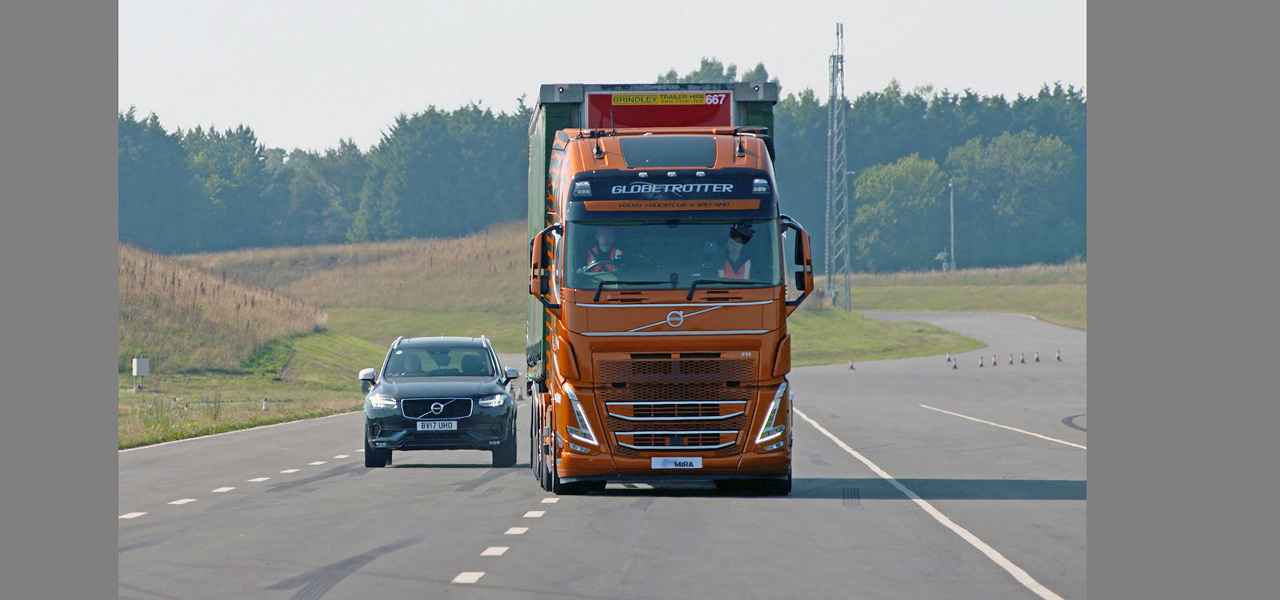 欧盟新车安全评鉴协会(Euro NCAP)将测试新型车道保持系统,该系统不仅能对卡车无意间偏离车道时发出警告,还能通过主动操控阻止其发生。(Euro NCAP)
欧盟新车安全评鉴协会(Euro NCAP)将测试新型车道保持系统,该系统不仅能对卡车无意间偏离车道时发出警告,还能通过主动操控阻止其发生。(Euro NCAP)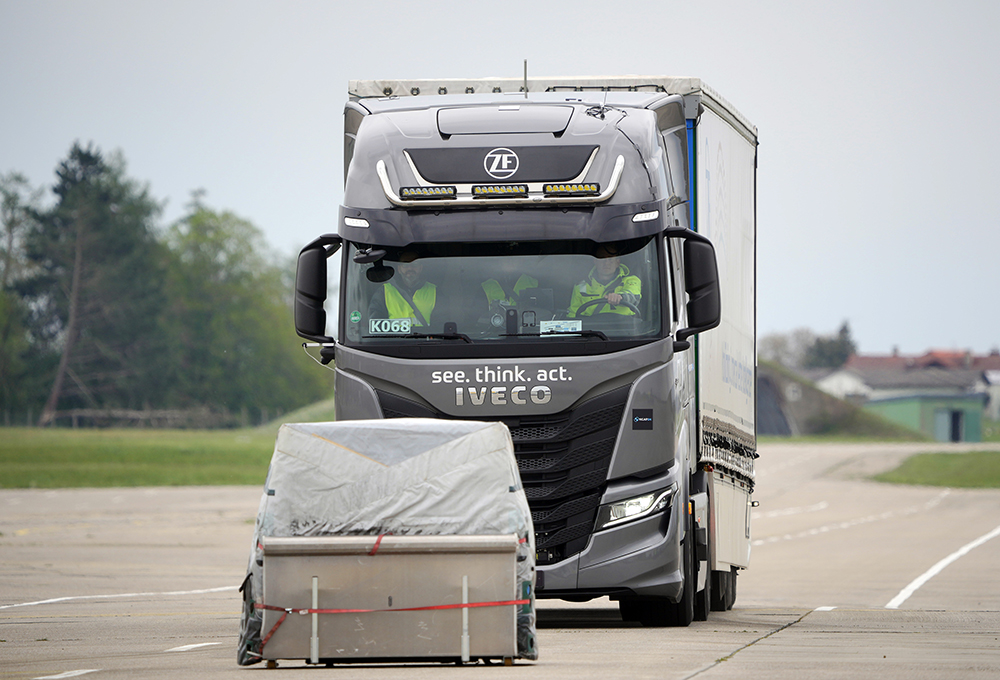 Euro NCAP认为,AEB 可以更有效地帮助减少卡车追尾时的死亡人数。(Euro NCAP)
Euro NCAP认为,AEB 可以更有效地帮助减少卡车追尾时的死亡人数。(Euro NCAP)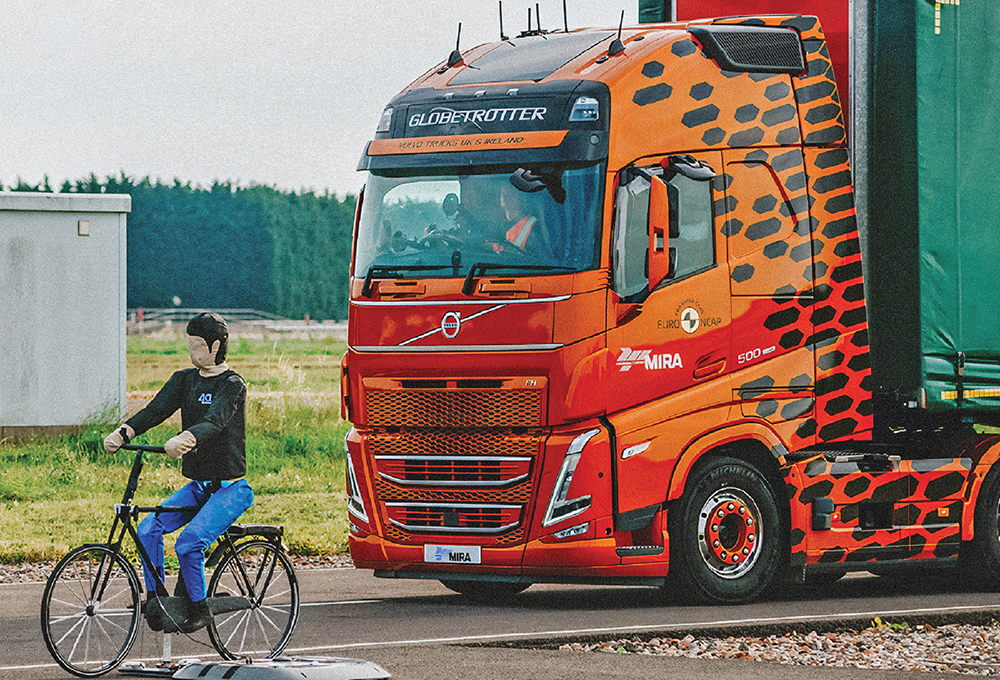 沃尔沃的侧向防撞安全系统在卡车的两侧各安装了一个双雷达,当其他道路使用者进入盲点区域时,雷达就会检测到。(Euro NCAP)
沃尔沃的侧向防撞安全系统在卡车的两侧各安装了一个双雷达,当其他道路使用者进入盲点区域时,雷达就会检测到。(Euro NCAP)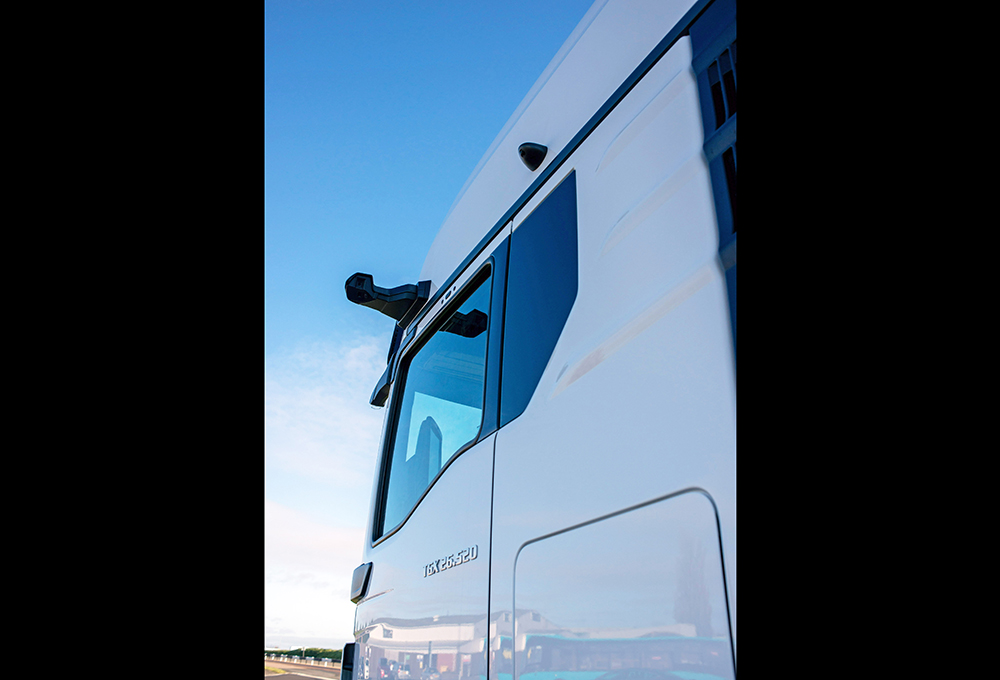 MAN的TGX卡车用一个较小的摄像监控系统(或称eMirror)取代了实际的后视镜,该系统视野更大,图像失真更少。(Euro NCAP)
MAN的TGX卡车用一个较小的摄像监控系统(或称eMirror)取代了实际的后视镜,该系统视野更大,图像失真更少。(Euro NCAP)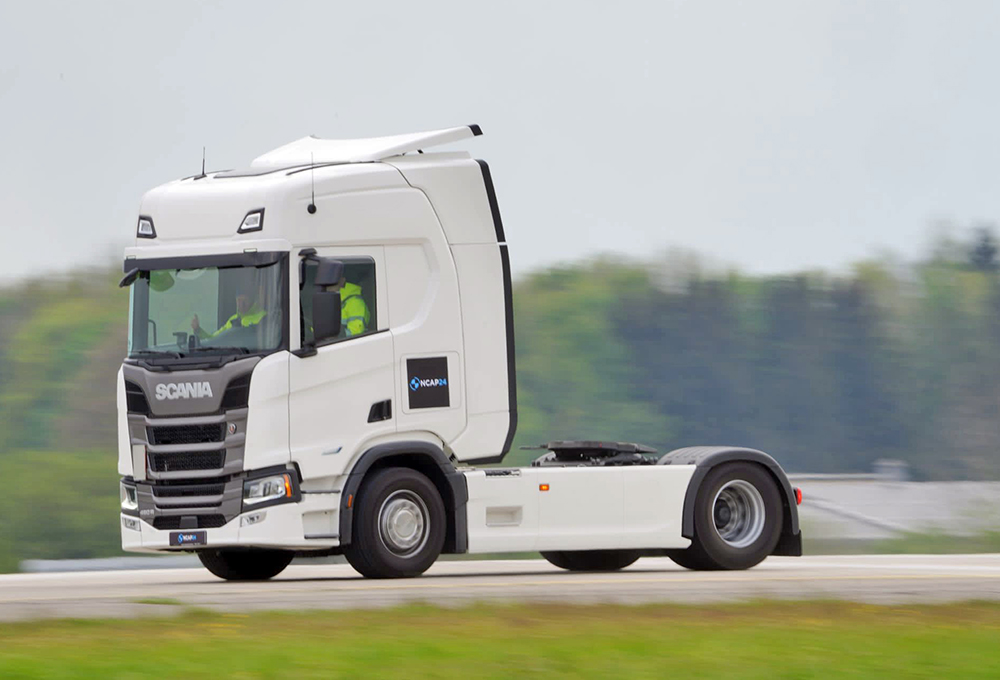 斯堪尼亚对Euro NCAP的安全测试方法表示赞赏,该方法最初侧重于避免碰撞和驾驶员视觉系统。主动安全要求将会提高,被动安全保护的碰撞测试将在未来的迭代中进行。(Euro NCAP)
斯堪尼亚对Euro NCAP的安全测试方法表示赞赏,该方法最初侧重于避免碰撞和驾驶员视觉系统。主动安全要求将会提高,被动安全保护的碰撞测试将在未来的迭代中进行。(Euro NCAP)
新推出的卡车安全评级测试旨在模拟现实世界的碰撞场景,并鼓励OEM采用避撞技术,并改善驾驶员视野。
欧盟新车安全评鉴协会(Euro NCAP)透露了正在筹备的新卡车安全评级的部分内容,以及打算如何测试卡车性能并设定基准。在今年四月于德国慕尼黑举行的NCAP24世界大会上,Euro NCAP向国际道路安全专家发表了这一声明,并表示此举旨在减轻重型卡车对道路安全的影响。根据其援引的数据,卡车仅占欧盟道路车辆的3%,却造成了近15%的道路死亡事故。
“在过去一年间,我们与汽车制造商密切合作开发测试,并向欧洲各地的不同利益相关者进行了咨询,其中包括分销商、运输公司、保险公司、市政府、立法机构和道路规划机构,以全面理解提高卡车和道路安全的复杂性,”Euro NCAP战略发展总监Matthew Avery在一份声明中表示。“未来的卡车安全评级将激励行业进一步提升卡车在城市和高速公路上的安全表现,并同时优化运营安全和成本。我们的目标是推行所有类型车辆安全方面的最佳实践,而不仅仅是达到最低标准。”
“为提高卡车和道路两方面的安全性,我们需要采取整体式的方法:从驾驶员行为和监控到道路基础设施,从采用目前用于乘用车的辅助驾驶技术,再到研究卡车的结构及其在事故中的表现,”瑞典道路运输公司协会的Ulric Långberg表示。“我们越早认识到卡车上的安全技术落后于乘用车,就能越早降低卡车的致命事故数量。”
Euro NCAP的Avery表示,新的卡车安全评级测试将是该行业的首次尝试,旨在帮助货运行业的所有利益相关者正确识别和评估卡车的安全水平。“这不仅将提升驾驶员的安全性,还将为那些投资最安全车辆的运营商创造机会,无论对于保险公司还是货运公司,该方案都将产生吸引力”。“Euro NCAP致力于通过打造一个安全市场,鼓励制造商和供应商进一步开展创新,并随着评级的发展不断提升安全效益。”
Euro NCAP指出,另一项重要技术是弱势道路使用者自动紧急制动(AEB VRU)系统,它可以预防三分之一的重卡与行人之间的碰撞事故。这些系统融合了摄像头和雷达数据,能够检测到横穿的行人、骑行者和滑板车骑行者,并向驾驶员发出警告或自动刹车。Euro NCAP希望所有制造商都能安装AEB VRU技术,但也指出,目前只有一家卡车制造商已将该系统投入生产。
斯堪尼亚发表声明支持Euro NCAP的新重型卡车安全测试系统。斯堪尼亚卡车可持续运输负责人Jacob Thärnå表示:“我们将Euro NCAP的倡议视为我们开发过程中的一个新颖且有趣的方面。评估卡车的安全功能比评估乘用车要复杂得多。重型卡车种类繁多,而且设计目的各不相同。Euro NCAP从小规模开始测试并在后续过程中不断学习的做法是明智的。”
Euro NCAP has revealed the elements it is considering as part of an upcoming Truck Safe rating, and how it intends to test and benchmark truck performance. The announcement was made to an audience of international road safety experts at the NCAP24 World Congress in Munich, Germany, in April. The action is intended to mitigate heavy trucks’ impact on road safety. The organization cited data showing that trucks are involved in almost 15% of all EU road fatalities but represent only 3% of vehicles on Europe’s roads.
Euro NCAP says the future rating scheme is designed to go further and faster than current EU truck safety regulations. The organization’s goal is to drive innovation and hasten the adoption of active-safety technologies such as automatic emergency braking (AEB) and lane support systems (LSS), while balancing the needs of the different commercial-vehicle sectors across Europe.
“[This] marks a significant moment in the development of Euro NCAP’s Truck Safe rating scheme,” Michiel van Ratingen, secretary general Euro NCAP, said at NCAP24. “Euro NCAP highlights the need for trucks to be better equipped with life-saving technologies, particularly related to crash avoidance, vision and aspects of post-crash rescue. The protocols announced [in Munich] that will be formally published [in May 2024] demonstrate that best-practice test methods developed over the last decade for passenger cars can be turned into useful guidelines for the design of future, safer heavy trucks.”
The new rating builds on Euro NCAP’s Light Commercial Van safety scheme. All protocols and requirements are being developed in collaboration with Euro NCAP members, test facilities and reviewed with manufacturers.
The organization decided to publicly present the procedures and requirements ahead of the rating to encourage the industry to take note and react accordingly, van Ratingen said. Major suppliers and vehicle manufacturers demonstrated their latest advanced safety technologies at NCAP24, including DAF, Scania, Volvo and ZF.
“Over the past 12 months, we have worked closely with vehicle manufacturers to develop the tests, and consulted with different stakeholders across Europe, including distributors, haulers, insurers, city authorities, legislators and strategic road organizations to fully understand the complexities of making trucks and roads safer,” Matthew Avery, director of strategy development at Euro NCAP, said in a statement. “The future Truck Safe rating will incentivize good safety performance in both cities and highways and allow optimization of operational safety and cost. Our aim is to progress towards best practice in all types of vehicle safety, rather than just meeting minimum standards.”
Tests emulate the real world
Truck accidents vary depending on the road environment (city or highway) as well as the collision partner (passenger car or vulnerable road user). Accidents between trucks and vulnerable road users (VRUs) currently account for 25% of all EU fatalities, according to Euro NCAP. The new tests aim to emulate real-world collisions and encourage manufacturers to fit collision avoidance technologies and improve driver vision. Euro NCAP says it will expand the program in the future to include crash protection as well.
“It’s about taking a holistic approach to making both trucks and roads safer: from driver behavior and monitoring to road infrastructure, to adopting assisted driving technologies currently available on cars, and looking at the structure of trucks and how they perform in accidents,” said Ulric Långberg of the Swedish Association of Road Transport Companies. “The sooner we recognize that safety technologies on trucks lag behind those on cars, the quicker we will be able to reduce the number of fatal accidents involving trucks.”
The requirements are expected to evolve as manufacturers provide feedback on the tests. Euro NCAP’s Truck Safe roadmap includes increased active-safety maneuvering requirements starting in 2027, and the crash testing of trucks to encourage better passive safety protection commencing in 2030. The vehicles will be tested by sector and will focus on city delivery, highway distribution, long haul, and tipper and refuse trucks. The organization says initial ratings will be released in November 2024.
The new Truck Safe rating scheme will be a first for the sector and will enable all stakeholders in the freight industry to identify and assess the safety level of trucks, according to Euro NCAP’s Avery. “Not only will this deliver enhanced safety for drivers but also create opportunities for those operators that invest in the safest vehicle, making the scheme attractive to insurers and freight shippers alike,” he said. “In creating a market for safety, Euro NCAP will encourage manufacturers and suppliers to innovate further, increasing the safety benefits as the ratings evolve.”
Key safety technologies being assessed by Euro NCAP include Intelligent Speed Adaptation, which uses cameras and GPS mapping to automatically read the speed limit and control the vehicle’s speed, and camera monitor systems (aka eMirrors) that present a large field of view with less image distortion than traditional mirrors and can be integrated with blind spot information and warning systems.
Another important technology, AEB VRU systems, could prevent a third of all heavy-truck-to-pedestrian crashes, according to Euro NCAP. These systems fuse camera and radar data to detect crossing pedestrians, cyclists and scooter riders, and warn the driver or automatically brake the truck. Euro NCAP wants all manufacturers to fit AEB VRU technology but notes that only one truck maker has a system in production.
Scania put out a statement welcoming Euro NCAP’s new system for safety testing of heavy trucks. “We see the Euro NCAP initiative as part of a new and interesting aspect in our development processes,” said Jacob Thärnå, head of sustainable transports at Scania Trucks. “Assessing safety-related functionality in trucks is a lot more complicated task than it is for passenger cars. Heavy trucks are very diverse, and they are made that way for a reason. Euro NCAP’s approach to start on a small scale and learn as they go is a wise decision.”
等级
打分
- 2分
- 4分
- 6分
- 8分
- 10分
平均分
- 作者:Ryan Gehm
- 行业:商用车
- 主题:管理与产品开发制造质量、可靠性与耐久性安全性测试与检验
